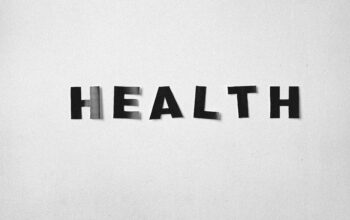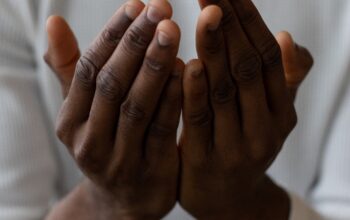Everyone experiences occasional anxiety, from self-consciousness before a big presentation to nervousness over job performance. However, ongoing worry or extreme fear is not something that should be overlooked and may indicate a much more serious mental health problem. Below, we cover the most common types of anxiety disorders, their symptoms, and their risks. We also take a closer look at how anxiety affects the Black community.
Types of Anxiety Disorders
Anxiety disorders affect more people than most know. In fact, someone you know could live with one and you may not realize it. The reason for this is that there are many types of anxiety disorders and each presents with different symptoms. Let’s look at some of the more common types of anxiety disorders.
Generalized Anxiety Disorder
According to the National Institute of Mental Health, generalized anxiety disorder (GAD) is a treatable condition that typically starts around age 30 but may occur in adults of any age and sometimes even in children and adolescents. The most common symptoms are excessive worry about everyday things and trouble controlling those worries. Most people with anxiety disorders like GAD are aware that they worry too much, which often makes symptoms worse.
Separation Anxiety Disorder
Separation anxiety is common in young children, but it typically resolves by about age three. If signs of anxiety persist or there are signs of more intense fear, there may be an underlying separation anxiety disorder. If not treated early, these disorders can continue throughout childhood and affect education, and relationships with others, and even cause physical symptoms. Most adults with separation anxiety disorders saw symptoms begin in early childhood.
Social Anxiety Disorder
Many brush off social anxiety disorder as “shyness” or a “lack of self-confidence” in public. However, there is much more to this anxiety disorder, previously called social phobia, often causing symptoms that affect every aspect of a person’s life and even the choices they make while living it. For example, they may attempt to avoid public places, choosing instead to stay home. If they need to interact, people with anxiety disorders may experience everything from sweating to a rapid heartbeat just at the thought of it. When not interacting, intense fear of future interactions may lead to panic attacks or a co-existing panic disorder.
Post Traumatic Stress Disorder
Following traumatic events, many experience a range of emotions, from guilt to anger. One response is intense anxiety. Anxiety is closely associated with PTSD, and is often treated similarly, even though PTSD is no longer considered strictly an anxiety disorder. It’s important to note that post traumatic stress disorder can affect anyone, not only those in the military. The American Psychiatric Association lists several other examples of traumatic events, such as sexual assault, natural disasters, bullying, and intimate partner violence.
Specific Phobias
Generalized anxiety disorder encompasses excessive worry about daily life. However, many people suffer from a specific phobia. The classic symptoms could be the same and many are severe enough to trigger panic attacks, depending on the type of phobia encountered. There are many types of phobias, from animal phobias like the fear of dogs or spiders to environmental phobias like the fear of heights or germs. Each phobia can occur on a spectrum, from mild to debilitating.
Mental health discussions are important and begin with us. Speaking up about conditions like anxiety and others can change so much. These discussions can (and should) be for every age.
Other Anxiety Disorders
There are many anxiety disorders, so it’s difficult to list them all. However, you should know several others that, although complex, are still common.
Panic Disorder: Panic attacks cause a range of symptoms that may even mimic a heart attack. The intense fear associated with prolonged or sudden, overwhelming anxiety can trigger these attacks. The disorder can become debilitating if not easily managed.
Agoraphobia: As a panic disorder and one of the many complex specific phobias, agoraphobia is the fear of being in a space where you cannot easily escape should you need to. This could be because of a small space such as inside an airplane, or because of large crowds that are difficult to navigate.
Selective Mutism: This is a type of social anxiety disorder in which those who have normal language skills around those they know well don’t speak in public, including at school, work, or other common locations.
Anxiety Symptoms
While you may easily notice the signs of someone experiencing a severe panic attack, it’s not so simple to see the more subtle symptoms of generalized anxiety disorder in someone who has learned how to manage it well. Still, there are some common symptoms of anxiety that you may experience or see in others.
Physical Symptoms:
Cold/sweaty hands
Numb/tingling hands or feet
Dry mouth
Nausea
Rapid heartbeat
Shortness of breath
Muscle tension
Mental and Behavioral Symptoms:
Panic or fear
Nightmares
Flashbacks
Obsessive thoughts
Restlessness
Ritualistic behaviors
Trouble sleeping
Risk Factors for Anxiety Disorders
Just as with any other physical or mental health condition, anxiety disorders come with risk factors. Some people are more susceptible to them for a variety of reasons. Remember, being at risk for an anxiety disorder does not guarantee that you will develop one. It simply means that you have a higher chance of experiencing anxiety related to a disorder. You should be aware of your symptoms and seek the help of a mental health professional if needed.
General Risk Factors
Most people have at least one or two, if not more, of the risk factors for anxiety below. They will also experience anxiety from time to time. More risk factors and more intense fear that affect your daily life increase the probability of an anxiety disorder that can and should be treated.
Do any of the below risk factors apply to you? If so, how many? Do they have a significant impact on how you life your life? Do you feel anxious or even intense fear over them?
Stress (especially chronic, excessive tension)
Personality traits (introversion vs. extroversion, etc.)
History of traumatic events
Gender (females are more susceptible to anxiety than males, gender dysphoria)
Chronic physical illness
Hormonal or other imbalances
Major life events (may cause temporary or lifelong anxiety)
Medication side effects
Race Specific Risks
African Americans and other POC may face additional risk factors for mental disorders like anxiety, panic attacks, depression, and more. The risks listed below make them more susceptible to many types of anxiety disorders, although they are less likely to report symptoms of them.
Racism: Whether institutional, interpersonal, internalized, or structural, racism makes life more difficult and anxiety is not only common but to be expected. African Americans encounter some of the strongest racial opposition in the United States, making it a powerful risk factor.
Inhibited Temperament: Defined as social withdrawal or avoidance, this temperament is often seen early in childhood and continues throughout life. A study conducted by Social Cognitive and Affective Neuroscience found that this trait may lead to increased susceptibility to behavioral and mental health conditions like anxiety disorders.
Certain Medical Conditions: Some physical health conditions have anxiety symptoms that may lead to a co-existing mental health problem. Unfortunately, African Americans are more susceptible to many of them, such as cardiovascular disease and diabetes. Because Black people are at higher risk for these conditions, they are therefore at higher risk of anxiety.
Genetic Factors: The RBFOX1 gene variant is closely linked to many psychiatric disorders, including generalized anxiety disorder and panic disorder. This gene mutation is not the only indicator for anxiety and some with the gene may not develop anxiety at all. However, the gene makes family members who share the RBFOX1 gene more susceptible.
Early Environment: Children who grow up in a home with at least one anxious parent are more likely to develop anxiety as they get older. Their early home environment is only one factor. Being bullied at school, unstable living arrangements among family members and other environmental factors may also play a role.
Anxiety in African Americans
Mental illness looks different for Black people in the United States, from how many experience it, their symptoms, and even seeking treatment. Understanding these disparities is the first step in resolving not only the prevalence of anxiety disorders among African Americans but also how those with these and other mental disorders are treated.
Statistics
According to a study conducted by the Department of Psychology at Boston University and the Department of Psychiatry at Massachusetts General Hospital, there are disparities among races and various anxiety disorders. For example, White people are more likely to suffer from generalized anxiety disorder, social anxiety disorder, and separation anxiety disorder. However, Black people show fewer symptoms of chronic anxiety disorders and are more likely to suffer from PTSD. This may be explained by the additional risks to their mental health. It’s important to note that no matter what anxiety disorder a person faces, there is a strong anxiety and depression association, increasing the risk for additional mental health concerns.
Treatments
The National Alliance on Mental Illness, or NAMI, is one of the largest advocates for mental health in the United States. They recommend psychotherapy with a Cognitive Behavioral Therapy (CBT) focus as one of the best treatment options for anxiety. Many find medications helpful as well, but they should be managed closely by an experienced mental health provider. Other ways to help manage stress are regular exercise, yoga, meditation, and overall self-awareness.
Black Americans may struggle to find the appropriate way to treat anxiety disorders, especially when there is already a shortage of mental health providers. Finding one close by who is also culturally aware and able to support your specific needs can be challenging. However, it’s important to remember that the search is worth the reward and, while it’s not possible to cure anxiety disorders, finding the right support system through an experienced and compassionate psychotherapist and community network can improve your symptoms and help improve your daily life significantly.
Resources
The Anxiety and Depression Association of America lists many helpful resources specific to African Americans facing mental disorders, from choosing a therapist to finding support groups. The organization even encourages people of all races to share their mental health story so that others may benefit, often realizing that they are not alone in their struggle.
African Americans and Anxiety Disorders
Whether you have a specific phobia, social anxiety affecting your job performance, or generalized anxiety disorder caused by physical health conditions, you don’t need to suffer alone. From psychotherapy to anti-anxiety medications, exposure therapy to coping strategies, there are things you can do to relieve symptoms. Black Health Matters works to help raise awareness of anxiety within the Black community so that more are willing to engage with providers about their symptoms and live happier, longer, and more fulfilling lives.
The post Anxiety: What It Is And How It Affects The Black Community appeared first on Black Health Matters.



